The Matadi Bridge’s 40th Anniversary: Inheriting Japanese Technology and a Love of the Bridge in the DRC
2023.06.12
The Democratic Republic of the Congo (DRC)’s Matadi Bridge, built with Japan’s cooperation, opened in 1983. The bridge, which stands as a symbol of the friendship between the Congo and Japan, celebrated its 40th anniversary in May 2023. It has been maintained and protected by Congolese hands since Japanese assistance was suspended due to the country’s political instability. The skills and convictions of the local “bridge keepers” that were passed on from Japan are being handed down to the next generation of the country’s young professionals.
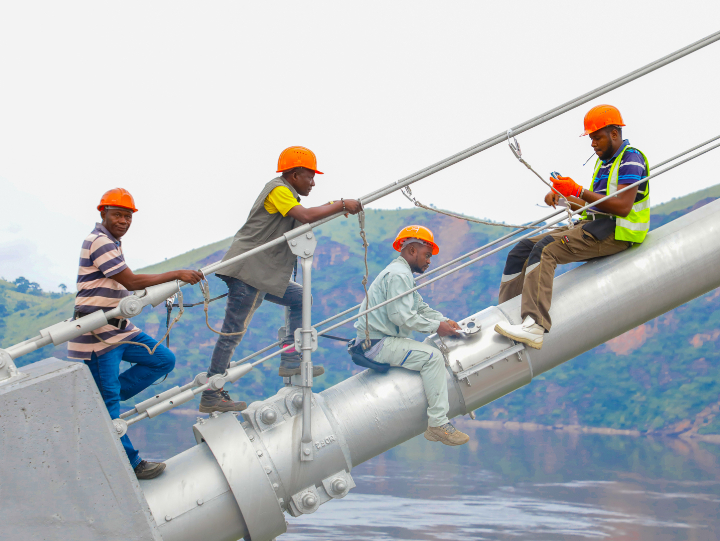
The DRC is located in the central part of the African continent. The country’s Matadi Bridge is one of the longest suspension bridges in Africa. It is the only bridge that spans the middle and lower reaches of the Congo River, which has the second largest basin area and flow rate in the world. Given the bridge’s immaculately maintained state, one can hardly believe that it was built 40 years ago. The bridge’s longevity has been supported by the strong ties nurtured between the DRC and Japan.
The Matadi Bridge is located on the main road connecting an Atlantic Ocean port and the capital city of Kinshasa, and was planned as a key overland transportation link for the mineral resource-rich DRC. Construction on the 722-meter-long bridge began in 1979 and was completed in 1983 through a Japanese ODA Loan. Planning for the Matadi Bridge began in the late 1970s, when Japan was already involved in research and development for the projected construction of the massive Seto Ohashi Bridge that would connect the Honshu and Shikoku islands. That allowed the concurrent application of Japan’s latest technologies in both Japan and the DRC, ensuring that the Matadi Bridge’s design and construction phases went smoothly.
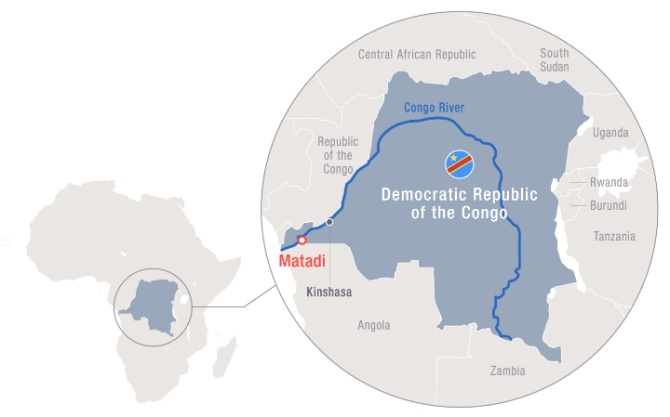
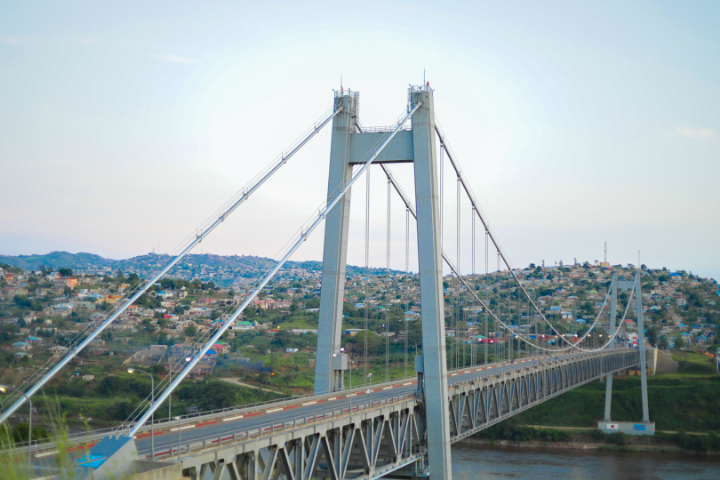
The Matadi Bridge, the longest suspension bridge on the African continent until 2018, marked the first step in the overseas deployment of Japanese suspension-bridge construction technologies.
To complete the construction, a total of 74 Japanese experts were dispatched to work with the local Organization for Equipment of Banana-Kinshasa (OEBK). Suspension bridge expert Tatsumi Masaaki worked on the construction as an in-house engineer from 1981 until the bridge’s completion in 1983. (Tatsumi is currently a technical advisor to Oriental Consultants Global Co., Ltd.)
“The project was completed 14 months ahead of schedule,” says Tatsumi. “That was thanks to the collaboration among many Japanese experts and Congolese engineers, the excellent work of the Congolese construction workers, and the efficient use of heavy equipment.”
The whole country celebrated the bridge’s inauguration, and the opening ceremony was a huge success. After the event, the bridge shook under the feet of the crowds who came to make their first crossing. Today, the maintenance of the Matadi Bridge is a major national project for the DRC and the bridge itself is a beloved symbol of friendship between the country and Japan.
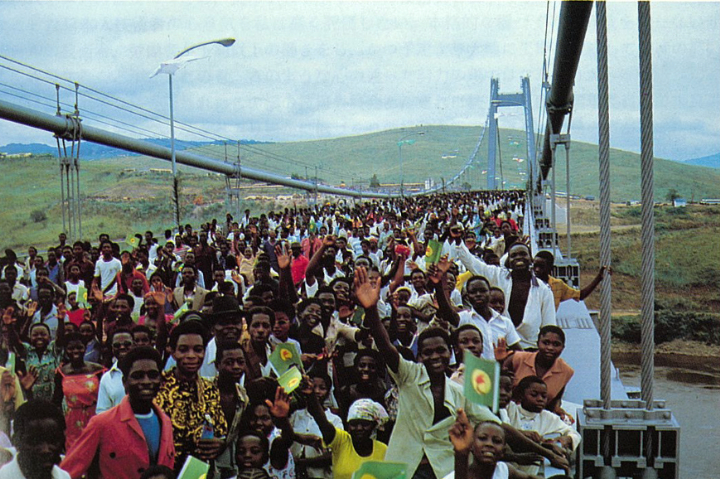
After its inauguration, the Matadi Bridge swarmed with people seeking to make their first crossing. Photo: Japan Society of Civil Engineers
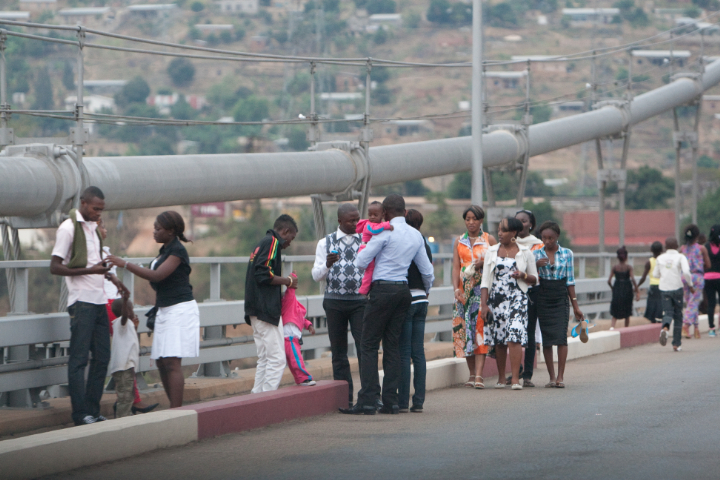
The bridge remains one of the country’s most popular tourist spots, and is thronged with visitors on weekends. Photo by Kuno Shinichi
Maintenance of the bridge after its completion was entrusted to the OEBK. Japanese experts would make regular inspections and provide guidance during short visits every two to three years. In 1991, riots in Kinshasa led to a long period of political instability, and Japan was forced to suspend its support. Maintenance manuals were the only forms of guidance left on site. Despite facing various difficulties such as lack of experience and funds, and an outflow of human resources due to the conflict, the Congolese engineers involved in the project since its construction continued to maintain and manage the bridge. These “bridge keepers” included André Madiata Ndele Buba and Kalombo Mukeba Josef.
The long years of turbulence finally came to an end. In 2012, Japanese assistance resumed and a JICA Technical Cooperation project called the Project on Capacity Development for Bridge Management (Matadi) was launched. As part of this project, Tatsumi visited the site for the first time in many years as the leader of the main cable opening inspection. He was surprised to see the site looking almost the same as when it was completed. He says that its condition was such that he did not feel the passage of the past 29 years.
“Interacting with the bridge every day, taking care of it, and coming to love it, nurtures a desire to inspect it and to act on these inspections,” Tatsumi says. “This is the ‘love of the bridge’ that we Japanese engineers wanted to pass on along with Japanese technology. I was deeply moved to see that their affection for the bridge had firmly taken root.”
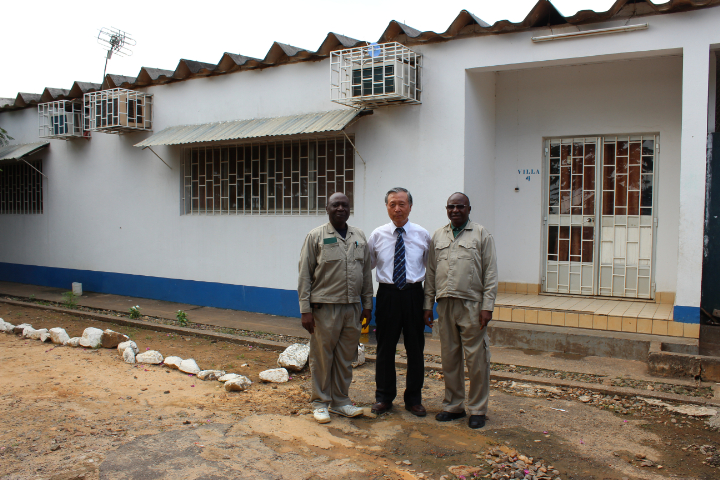
Tatsumi was photographed with colleagues Madiata (right) and Kalombo (left) during a 2012 onsite survey. The dormitory in the background is where Tatsumi’s family lived when the bridge was built and where Kalombo was living at the time of this photo.
Madiata and Kalombo patiently continued to maintain the bridge during the country’s turmoil. They led the OEBK’s steady, seven-year independent effort to repaint the bridge that began in 2003, which also contributed greatly to the bridge’s upkeep. The OEBK has been collecting tolls since 1987 to secure a budget for the maintenance and management of the bridge, and these reserve funds covered the cost of the repainting.
Although the Matadi Bridge has been beautifully managed, the inspection revealed some issues, such as rust inside the cables. A maintenance and management plan that incorporated the latest techniques was then developed.
“A dry air injection system was installed to address the rust,” says Tatsumi. “It’s a system that was put into practical use for the first time in the world on Japan’s Akashi-Kaikyo Bridge and has become a global standard.” The system pumps dehumidified air into the interior of the cables that support the bridge, thereby preventing corrosion and enhancing durability.
The installation was completed in 2017 with grant aid from JICA and the maintenance manual was updated. Tatsumi spoke at an event commemorating the completion, saying, “The challenge is how to foster successors in the future. I hope Madiata and Kalombo will continue to provide guidance to the young engineers.” JICA continues to support the development of the next generation of engineers by dispatching Japanese experts to the country and regularly inviting Congolese engineers to Japan for training.
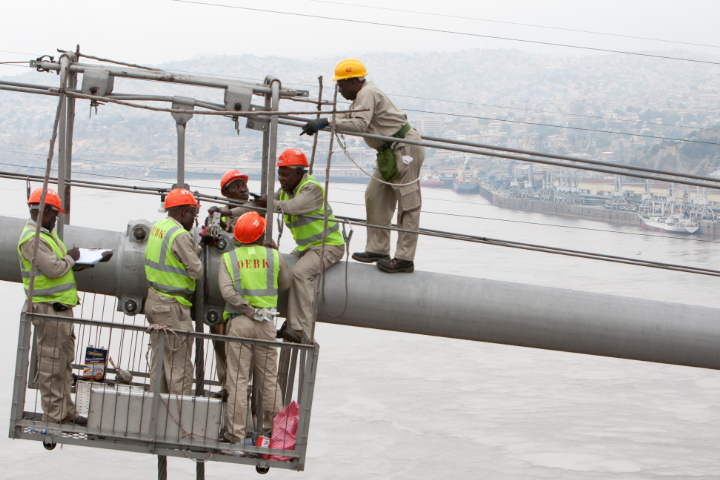
OEBK engineers working on cables high in the air. Kalombo (in the yellow helmet) is an experienced engineer who gives technical guidance to younger workers. The Port of Matadi can be seen in the distance. Photo by Kuno Shinichi
The expert engineers Madiata and Kalombo finally retired in January 2023, and the role of “bridge keepers” was passed on to younger engineers, including Belkadi Bahangulu. Belkadi became a member of the OEBK in 2015 during the installation of the dry air injection system, and currently serves as the system supervisor in his role as the Chief of the Technical Division.
“I have great respect for Madiata and Kalombo,” says Belkadi. “They are legends who have taken great care of the bridge over the years, and the reason the Matadi Bridge is the way it is now. I would love to succeed them in contributing to the maintenance of the bridge.”
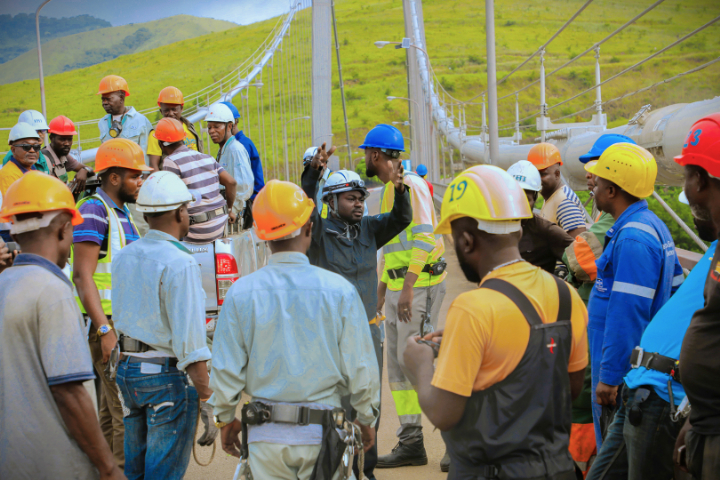
Chief of the Technical Division Belkadi (center) supervising onsite activity.
In addition to managing and inspecting related equipment, there are many tasks necessary to maintain the system, including daily measurements and the recording of temperature, humidity, and other data. In the beginning, the measurement data was sent every Friday to Japan where Tatsumi would check it and reply with advice.
“Top engineers in Japan kindly gave us suggestions, which were a great source of joy and encouragement,” says Belkadi. “I am proud of my job protecting the Matadi Bridge, and I hope to continue.”
The Matadi Bridge has been carefully maintained for 40 years, thanks to the guidance of Japanese engineers and the never-give-up spirit of the Congolese people. Deterioration of the pavement has become a major issue in recent years, however, so a preparatory survey has been carried out by JICA.
Tatsumi has high expectations for the rehabilitation project that may result from the survey. “If it happens, it will be the first time in a long time that the Congolese and Japanese people will work together on the site,” he says. “so, I think it will further deepen the bond between the two countries.” If this project leads to the training of young engineers on the Japanese side, which is a pressing issue, the bridge of friendship between the two countries will be in good shape for many years to come.
scroll